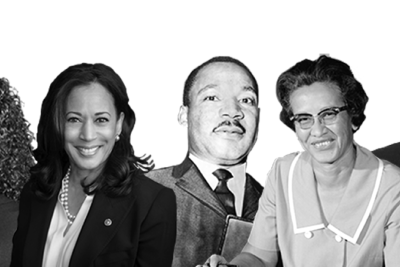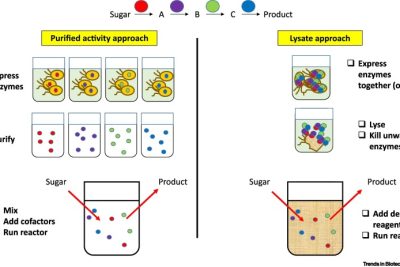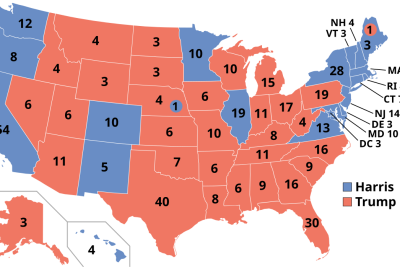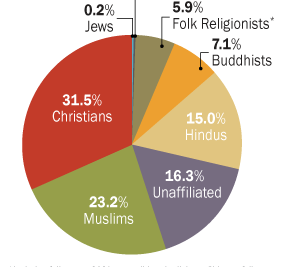
Schools of the Americas: Understanding WHINSEC's Role Today

The Schools of the Americas have long been a contentious topic in discussions about U.S. influence in Latin America. Established with the intent to provide military training and education to foreign military personnel, these institutions have been criticized for their historical ties to human rights violations in the region. As an evolution of this controversial legacy, the Western Hemisphere Institute for Security Cooperation (WHINSEC) was established as a successor to the School of the Americas, aiming to reshape its image and mission amidst mounting criticism.
WHINSEC's formation represented a pivotal moment in the U.S. military's approach to training foreign forces, emphasizing democratic principles and respect for human rights. However, as the legacy of the Schools of the Americas looms large, it raises critical questions about the effectiveness and true intentions of this new institute. This article delves into the historical context, mission, criticisms, and future prospects of WHINSEC, providing a comprehensive understanding of its role and impact in today's geopolitical landscape.
- The History of the School of the Americas
- The Transition to WHINSEC: A New Era?
- Mission and Goals of WHINSEC
- Criticisms and Controversies Surrounding WHINSEC
- The Impact of WHINSEC on Latin American Relations
- Congressional Actions and Public Sentiment
- Case Studies: The Effectiveness of WHINSEC Training
- The Future of WHINSEC: Prospects and Challenges
- Conclusion: Evaluating WHINSEC's Role in the Americas
The History of the School of the Americas
The School of the Americas (SOA) was founded in 1946, initially designed to foster a sense of cooperation between the U.S. military and Latin American armed forces. Over the decades, the SOA became infamous for its close connections to oppressive regimes and repressive tactics. Many of its graduates returned to their home countries, allegedly applying the counterinsurgency tactics learned at the school to suppress dissent and commit acts of violence against civilians. While the stated objective of the SOA was to combat the spread of communism during the Cold War, critics argue that its legacy is marred by associations with human rights violations and state terror.
Public outcry against the SOA intensified throughout the late 20th century, particularly following high-profile cases where graduates were implicated in atrocities. The killing of six Jesuit priests in El Salvador and the ongoing civil strife in various Latin American nations drew scrutiny to the U.S. military's involvement in training foreign soldiers. In 2000, these criticisms culminated in the closure of the SOA, prompting the establishment of WHINSEC in 2001, with the goal of moving beyond the controversial practices of its predecessor and ensuring adherence to democratic norms.
The Transition to WHINSEC: A New Era?
When WHINSEC was launched, it was marketed as a fresh approach to military training, distancing itself from the troubled legacy of the Schools of the Americas. The new institute aimed to foster better relationships between the U.S. and Latin American countries by incorporating human rights education into its curriculum. While proponents of WHINSEC hailed it as a necessary step towards improving military cooperation in the Western Hemisphere, detractors were quick to point out that it was essentially a rebranding of the SOA with no significant change in its operational philosophies.
One of the most substantial changes promised with the transition to WHINSEC was the inclusion of a focus on democratic governance, civilian oversight of military operations, and respect for human rights. This was seen as particularly important given the historical context of U.S. military involvement in Latin America, which had often supported authoritarian regimes in a bid to counter perceived communist threats. Despite these assurances, many critics remained skeptical of WHINSEC's intentions and questioned whether it would genuinely operate differently than its predecessor.
Mission and Goals of WHINSEC
WHINSEC's mission is articulated as providing "education and training that promotes democratic values, respect for human rights, and the rule of law" within the Western Hemisphere. The institute seeks to develop partnerships among military and security forces, increasing regional stability through cooperation and understanding. This mission is rooted in a philosophy that emphasizes adherence to international humanitarian law and respect for human rights, counteracting the negative image that was associated with the Schools of the Americas.
The specific goals of WHINSEC include enhancing the capabilities of military and security forces to respond effectively to a range of challenges while maintaining a commitment to human rights and democratic governance. Training programs often cover subjects such as peacekeeping, disaster relief, and civil-military relations, intending to provide participants with the necessary skills to operate effectively within a framework of respect for civilian oversight.
Curriculum Highlights
WHINSEC offers a variety of courses that reflect its mission, including programs on human rights, conflict resolution, and community policing. By emphasizing these areas, the institute aims to transform the narrative surrounding military training, focusing on positively impacting the societies these soldiers serve. However, the question remains whether this curriculum can genuinely erase the detrimental impacts associated with the Schools of the Americas.
Criticisms and Controversies Surrounding WHINSEC
Additionally, public perception remains skeptical, with many viewing WHINSEC as a public relations strategy rather than a sincere commitment to change. Critics often highlight incidents of human rights abuses linked to WHINSEC graduates as evidence that the ethos of the Schools of the Americas persists. This ongoing scrutiny complicates the institute's ability to achieve its goals of fostering trust and cooperation between the U.S. and Latin American nations.
The Impact of WHINSEC on Latin American Relations
WHINSEC's role in shaping U.S.-Latin American relations continues to evolve as geopolitical dynamics shift throughout the region. Some nations see the institution as an opportunity for collaboration and learning, while others remain wary of U.S. involvement in military affairs. As a result, participation in WHINSEC programs has varied, with some countries opting out entirely due to historical grievances linked to the policies of the Schools of the Americas.
The U.S. aims to strengthen bilateral security partnerships through WHINSEC, fostering an environment where participant nations can address regional threats collaboratively. However, the perception of the U.S. military as a proponent of democracy is complicated by its historical involvement in supporting authoritarian regimes in Latin America, leading to calls for greater transparency and accountability from WHINSEC.
Congressional Actions and Public Sentiment
As WHINSEC continues to operate, Congress has taken steps to influence its funding and mission through various legislative actions. Some policymakers argue that WHINSEC has failed to live up to its mission of promoting human rights and democracy, calling for stricter oversight and potential defunding of the institute. Public sentiment on this issue is heavily influenced by perceptions of military training and its implications for human rights in Latin America.
Opposition to WHINSEC has manifested in grassroots movements and public protests, advocating for a complete reevaluation of U.S. military aid and training programs in the region. Advocacy groups often highlight the lasting consequences of the SOA's legacy as a basis for their demands, arguing that the cycle of violence and repression must be broken. As public awareness of military training programs grows, so does the push for greater accountability and transparency within WHINSEC.
Case Studies: The Effectiveness of WHINSEC Training
To understand the implications of WHINSEC's training programs, examining specific case studies can provide insight into their effectiveness and impact. Evaluating individual countries' experiences with WHINSEC can illuminate broader themes of success and failure within the institute's mission. These case studies may include countries that have engaged closely with WHINSEC, assessing whether the training has contributed to improved governance and respect for human rights in those contexts.
Success Stories
Some nations have reported positive outcomes from their interactions with WHINSEC, citing improvements in military professionalism and collaboration with civilian authorities. In instances where democratic governance has strengthened, the contribution of training programs that emphasize human rights cannot be disregarded. These success stories serve as a counterpoint to criticisms, reinforcing the argument that WHINSEC can fulfill its mission if properly implemented.
Challenges and Failures
Conversely, other case studies reveal troubling outcomes linked to WHINSEC training, where graduates have returned to their countries firmly entrenched in repressive practices. These instances serve as reminders of the difficult legacy that the Schools of the Americas left behind and raise questions about the institute's ability to truly alter military culture and practices. Examining both successes and failures gives a holistic view of the challenges facing WHINSEC as it tries to navigate its dual commitment to military readiness and human rights.
The Future of WHINSEC: Prospects and Challenges
The future of WHINSEC remains uncertain as it grapples with the tension between its stated goals and the historical baggage of the Schools of the Americas. While there is potential for positive engagement, the path forward will rely heavily on addressing lingering concerns over human rights and military practices. As the U.S. Congress mulls over funding and oversight measures, WHINSEC must adapt to meet the demands of an increasingly scrutinizing public and civil society.
Moreover, with the rise of new global challenges, including transnational crime, drug trafficking, and cybersecurity threats, WHINSEC will need to evolve its training programs accordingly. Developing new curricula that addresses these contemporary challenges while maintaining its commitment to human rights will pose a significant challenge. The balance between national security interests and the promotion of democratic institutions will be critical to WHINSEC’s long-term viability.
Conclusion: Evaluating WHINSEC's Role in the Americas
In summation, WHINSEC's role within the context of U.S. military and diplomatic strategies in Latin America is a complex and dynamic one. While it attempts to position itself as a modern institution committed to democratic values, the shadow of the Schools of the Americas continues to influence perceptions and critiques. The institute's future will depend greatly on its ability to demonstrate genuine commitment to the principles of human rights and accountability while adjusting to the evolving geopolitical landscape.
Ultimately, understanding WHINSEC's role today is foundational for policymakers, military leaders, and civil society actors striving to create a safer, more democratic hemisphere. Continued engagement and dialogue about the effectiveness and implications of military training programs are essential to ensuring that WHINSEC emerges not merely as a rebranded version of its historical predecessor, but as a genuinely progressive institution dedicated to promoting peace, security, and human rights in the Americas.
Did you find this article helpful? Schools of the Americas: Understanding WHINSEC's Role Today See more here Education.
Leave a Reply






Related posts